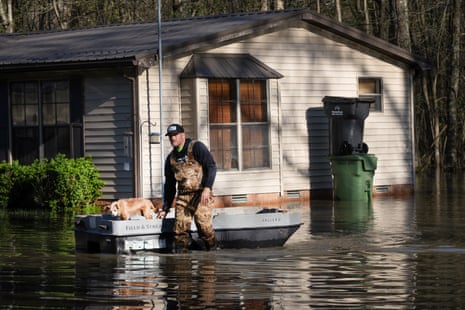How Climate Change Is Making Extreme Weather More Severe in the US
Climate change is no longer a distant issue; it's shaping our everyday weather and causing severe events across the US. Recent storms and flooding have highlighted just how much a warming planet is impacting Americans from the Midwest to the South. Let’s dive into the evidence, what experts are saying, and what this means for communities moving forward.

Understanding the Role of Climate Change in Extreme Weather
Scientists have gathered clear evidence that climate change is increasing the frequency and intensity of extreme weather events. Warmer global temperatures create more energy in the atmosphere, leading to heavier rainfall, stronger storms, and worse flooding. In early April 2025, a historic storm swept across eight states, dumping record amounts of rain and causing catastrophic flooding.
A study by the World Weather Attribution group found that burning fossil fuels has made storms like these 40% more likely. Surface sea temperatures in the Gulf of Mexico were about 2.2°F (1.2°C) warmer than average, providing extra fuel for these devastating weather systems.
Real-World Impact: Flooding Across the Central US
Between April 3 and April 6, 2025, severe thunderstorms pounded regions such as Kentucky and Arkansas. Floodwaters killed at least 24 people, inundated crops, destroyed homes, and left hundreds of thousands without power. According to a detailed report from NBC News, this extreme event was around 9% more intense due to global warming — and is now 40% more likely to occur than in pre-industrial times.
The increase in rainfall is measurable and persistent. For example, Kentucky’s annual rainfall has surged by 10% over the last 130 years. Half of the state’s 10 wettest years have happened since 2011, a clear sign that climate change is altering local weather patterns for the long term.
Why These Changes Matter Now
Analysis from CBS News underscores that early warnings and strong forecasting helped limit the death toll and economic devastation during these storms. However, staff shortages at the National Weather Service may threaten future disaster response. With more intense and frequent storms expected if fossil fuel emissions remain high, communities will need stronger infrastructure and support to stay safe.
Climate change is also pushing up insurance costs. Homeowners in high-risk areas have seen premiums rise significantly as insurers respond to the likelihood of more severe damage from weather events. Researchers warn that without meaningful action to curb emissions, destructive storms could double in frequency and grow even more intense by the end of the century.
Looking Ahead: Building Resilience in a Changing Climate
The mounting evidence is clear: climate change is here, and it’s making extreme weather events across the US more dangerous and more common. Policy changes, improved forecasting, sustainable infrastructure, and reducing fossil fuel use are critical to protecting communities.
Now is the time to stay informed, support science-based solutions, and urge leaders to take action. Extreme weather is already affecting millions. Proactive steps today can help build safer, more resilient communities for tomorrow.